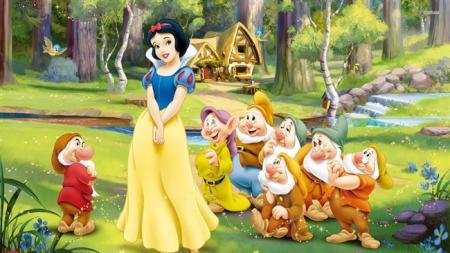
Stories like Cinderella and Beauty and the Beast are so ingrained in popular culture that it can be all too easy to overlook the damaging ideologies that they perpetuate via misogynistic characters, degrading plot lines and racial uniformity, Independent wrote.
Donald Haase, author of Fairytales and Feminism, encourages parents to read these stories skeptically, so as to confront such archaisms rather than endorse them.
“They can read or tell classical tales in ways that intentionally question or subvert the stereotypes,” the Wayne State University professor told The Independent.
So, what are the stereotypes that parents should be discouraging?
Women are passive damsels who can only be saved by men
What do Snow White, Sleeping Beauty and Cinderella all have in common?
Aside from porcelain skin and inexplicably glossy hair, they are each saved from a lifetime of misery and/or eternal sleep by a heroic Prince Charming figure.
Typically, this character is a glorified caricature of defunct masculinity, incensed solely by the egotism of a heroic quest for ‘true love’.
Naturally, this is as offensive to men as it is to women.
“This places a large amount of unnecessary stress onto both sexes and in particular women as they believe that they should take up the western traditional role of being a woman,” explains Victoria Showunmi, who lectures in gender studies at UCL.
Lack of racial/physical/sexual diversity
It is a truth universally acknowledged that Disney princesses are beautiful, slim and more often than not, white.
While there are some exceptions (Mulan, Pocahontas and Princess Jasmine), traditionally, a white face reigns supreme.
Equally problematic is the unrealistic body standards set by whippet-thin Belles and Ariels, who dictate the animated fairytale world.
For a child encountering these stories for the first time, such restrictive aesthetic standards can be hugely detrimental, portraying the idea that beauty and happiness is synonymous with thinness.
Female characters are either bound to the home…
Another disheartening commonality that Snow White, Belle and Cinderella share is their heightened domesticity.
The only way Belle can save her poor father from the Beast’s entrapment is by becoming his house maid and Cinderella is bound to a life of floor-scrubbing while poor Snow White has to cater for seven male dwarves — one of whom is unappetizingly called Sneezy.
At least none of them were named Smelly.
…Or they’re evil step mothers/sisters/witches
That’s not to say that it’s all aprons and marigolds for our fairytale heroines.
One Google search for ‘fairytale villains’ generates a slew of sadistic female ‘baddies’: Cinderella’s evil step mother, her ‘ugly sisters’, Ursula, the wicked witch of the west.
These women are vindictive towards one another and negate any concept of sisterhood.
They represent what literary scholar Ruth Bottigheimer called an “apparent inner drive to incriminate females” in her book Grimms’ Bad Girls and Bold Boys.
These rancorous caricatures present us with the ‘same theme’ time and time again, explains Showunmi, that could severely inhibit a child’s propensity to form stable and supportive relationships.
While fairytales can be brilliant for inspiring imaginative discussions in children, parents must be vigilant in their way of sharing these tales so as to avoid promoting outdated ideologies they continue to foster.
